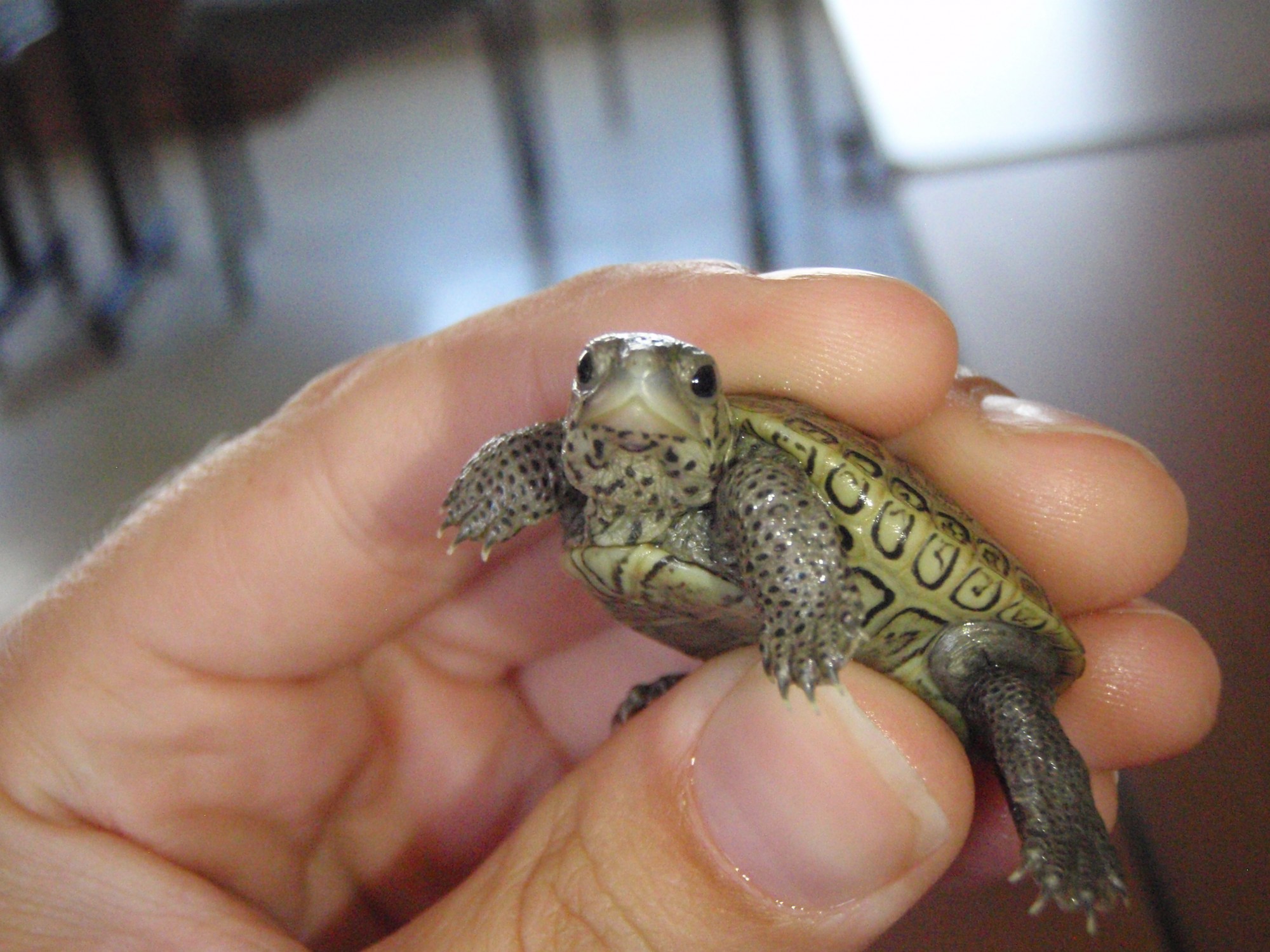The diamondback terrapin is a celebrated mainstay for students at the University of Maryland. And this year, the state’s reptile plans to make a similar impact on K-12 students across the state — thanks to 180 baby turtles.
Since 2005, the project’s lead scientist, Willem Roosenburg, has taken turtle hatchlings from Poplar Island — an island in the Chesapeake Bay — toward the end of each summer. Those hatchlings are placed into 45 classrooms across the state, and students are given the opportunity to gather their growth data. At the beginning of the next summer, almost a year later, the turtles are released on the same island.
Hatchlings are about a month old when they reach the classrooms, said Sue Hannahs, a teacher at Severna Park High School. Hannahs, who has a turtle in her classroom now, has participated in the program for more than a decade.
She has also been able to take her students to Poplar Island to release the turtles at the end of the school year.

(Photo courtesy of Megan DiFatta, Poplar Island tour coordinator)
For as long as the opportunity is offered, she will continue to participate, Hannahs said.
“It’s one of the first things kids ask when they come in each year,” she said. They say, “‘When are we getting the turtles?'”
Just last year, Roosenburg decided to add a new aspect to the project. Teachers who have two turtles keep them in two separate tanks at different temperatures so that students can measure the growth rates of the two turtles like they did before, but now they are able to determine whether the water temperatures caused a difference in the growth rates.
“Our first goal was specifically to provide a STEM experience for the students, and if ultimately we do get some publishable data out of it, that would be awesome,” Roosenburg said. “But it’s more about students having a heuristic experience that allows them to see what [the] factors [are] that would contribute to differences in size between turtles.”
Arlington Echo Outdoor Education Center and the National Aquarium are partnering with the Maryland Environmental Service, Army Corps of Engineers and the Maryland Port Administration to provide this opportunity, according to the Arlington Echo website.
The hope from this project is that students will also become more interested in the Chesapeake Bay and the issues that impact it, said Heather McCarthy, an Arlington Echo outdoor educator.

(Photo courtesy of Megan DiFatta, Poplar Island tour coordinator)
“In our classrooms and in the way education is moving along, so much learning is coming from a book, and teachers have to cover a lot of material in a short amount of time,” McCarthy said. “[With this project], kids can hold a turtle, they can hold a measuring device; when they talk about the Chesapeake Bay they have a connection … on a level other than seeing pictures or hearing about the bay.”
One of the challenges involved in this experiment is that having two tanks in each classroom, and dozens of classrooms across the state, can lead to a variation in temperature among the tanks, Roosenburg said.
“We tried to record the temperatures in the aquarium but we ran into some technical issues,” he added. “The experiment requires some attention to detail.”
The project isn’t just beneficial in the obvious ways, McCarthy said.
“I’ve been so amazed at hearing all of the ways that our teachers are incorporating this into … things they were already going to be teaching in their classrooms,” McCarthy said.
One of her favorite stories from the classrooms, she said, came from a second grader’s birthday.
Instead of asking for gifts, McCarthy said, “the second grader asked to donate money to the Chesapeake Bay because she was very inspired. And I thought that was something special.”



